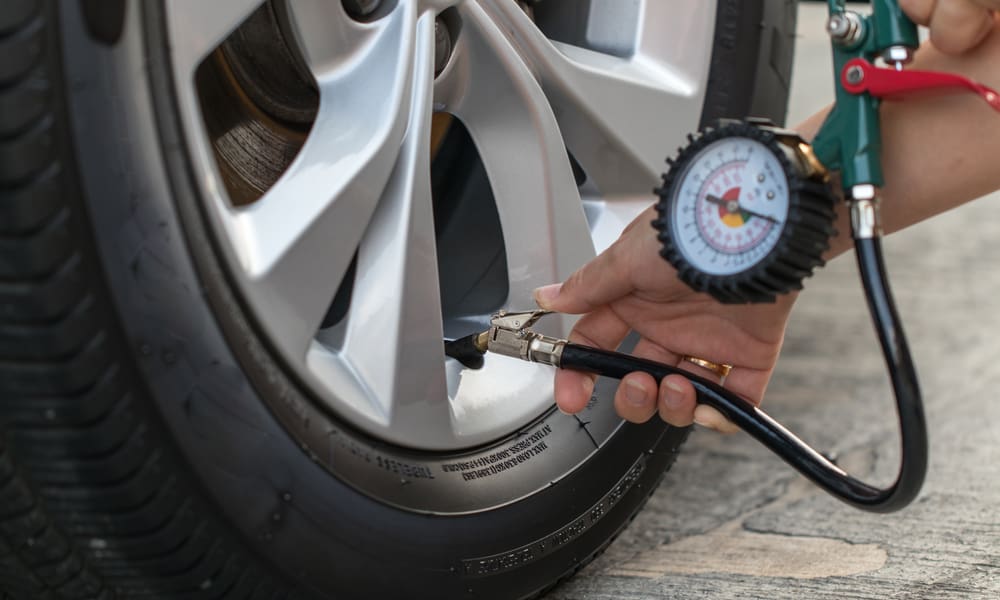Not many things are worse than driving with low tire pressure. Properly inflating your tires is crucial for safety, especially when you go on a long road trip or drive on the highway.
Fortunately, doing this requires only a few minutes of your time and little to no knowledge in cars or mechanics. You can do it while on the road, or when you visit a gas station. Here is everything you need to do to fix the low tire pressure.
There are a few reasons why car and tire manufacturers recommend drivers to keep the tires properly inflated. And, the primary reason for that is safety.
When the pressure in the tires is low, the overall stability will be worse than with properly inflated tires. That’s especially true if your tires are a lot of PSI (Bar) under the recommended tire pressure.
More accurately, because the tires are softer, the handling will be less responsive – your car will feel heavier. Also, the vehicle becomes unstable at very low speeds, which is only exaggerated on the highway.
Furthermore, underinflated tires worsen the performance and fuel economy of your car. While you probably won’t be able to feel the performance decrease, the “mpg” meter on your car will show much lower numbers.
On average, the fuel consumption of your car will increase by 0.2% for every PSI of pressure dropped. This means that if the pressure falls from 32 PSI to 20 PSI, you will experience around 1.5% worse fuel economy.
Finally, driving on low tire pressure can accelerate the tread wear of your tires. Accelerated wear can quickly render your tires useless, especially for driving on wet surfaces. Moreover, this means that you’ll replace the tires sooner, which might cost you in the long run.
Inflating the tires on your car is quick and straightforward. However, to do it properly, it’s best to prepare well.
First, make sure that your tires are cold when inflating and measuring the pressure. It would be best if you did it in the morning, or only after driving a few miles. Never measure the pressure after a long ride.
It would be best if you did it in the morning, or only after driving a few miles. Never measure the pressure after a long ride.
Then, prepare with some tools. To check the pressure on your tires, you’ll need a tire pressure gauge. Nowadays, gauges are very inexpensive, and they are also tiny so that you can keep it inside the area for the spare tire.
Then, you will also need an air pump to inflate the tire. Many types of air pumps exist, including hand-operated, foot-operated, and an automatic air pump.
The hand- and -foot-operated air pumps are less expensive, but they also require much more force and take more time.
Automatic air pumps usually connect to the 12V socket in your vehicle, which makes the whole job faster and much more convenient.
Now, let’s see what’s needed to inflate your tires properly.
Unscrew the plastic cap that sits over the valve stem. On steel rims with wheel covers, you might also need to remove the cover.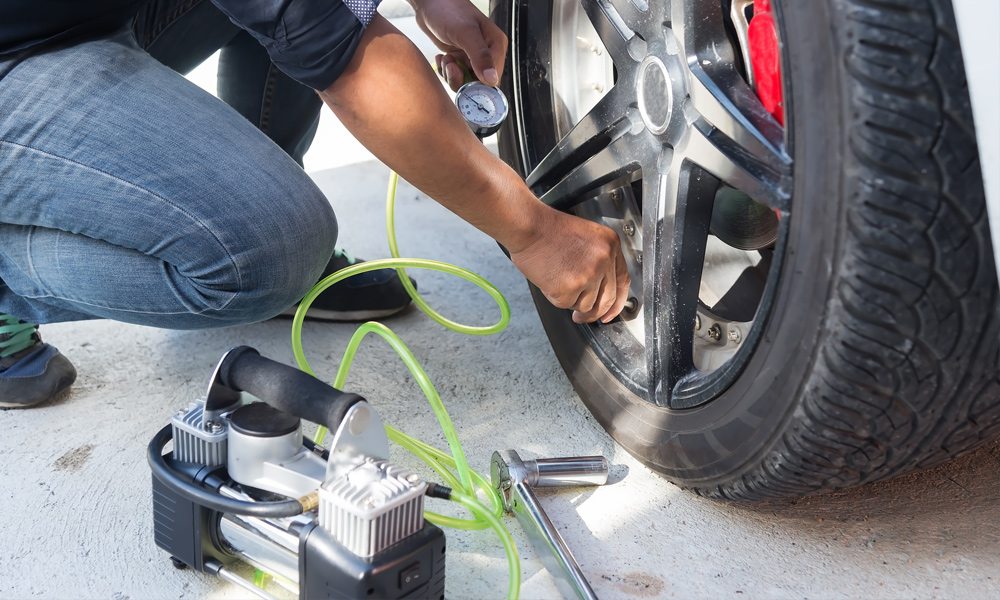 Place the plastic cap in a safe place – you’ll need to screw it in place later.
Place the plastic cap in a safe place – you’ll need to screw it in place later.
Otherwise, dirt and debris might get into the valve stem, which can get in the way the next time you want to inflate or measure the pressure in your tires.
Place the end of the hose of the tire gauge on the valve stem. Push as hard as needed, so there is no hissing noise. Then, check the reading – on analog gauges, the needle should jump immediately. On digital gauges, though, you might need to push a button to activate it.
Once you measured the pressure inside the tire, it’s best to compare it to the recommended pressure first. You can find the recommended tire pressure on a sticker on the sill of the driver’s or passenger’s door. If you can’t find it there, it’s best to refer to the owner’s manual.
Don’t inflate the tire if the tire pressure is equal to the recommended one.
Place the end of the hose on the valve stem and make sure that it clamps in place. If you hear a hissing sound, you won’t be able to inflate the tire. On some air pumps, you might need to hold the tip of the hose firmly pressed against the valve stem.
Then, start pumping for a while. Check the tire pressure on every 15-30 seconds, as overinflated tires will also not perform well. And, even if you overinflate the tire, don’t worry. Press the core of the valve stem with a sharp object, and the tire will start deflating.
Once you reach the recommended pressure, place the plastic cap back over the valve stem.
You can also fix low tire pressure at the nearest gas station. The air pumps at gas stations will automatically reach the desired pressure. Just enter the recommended pressure on the apparatus, put the hose on the valve stem, and wait until you hear the sound signal.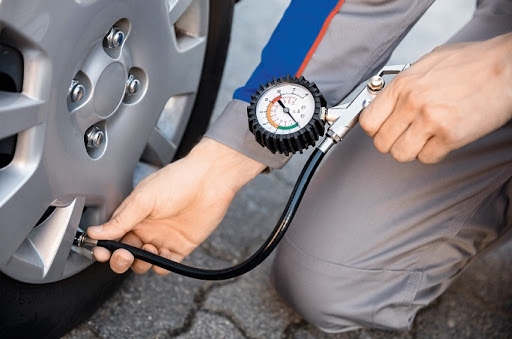
When one of your tires is underinflated, the TPMS (Tire Pressure Monitoring System) on your dashboard will illuminate. As soon as you inflate the tire, though, the light should go out. However, in many cases, the light might not go out immediately. Here is what you need to do to rectify that.
Driving for around 5-10 miles at speeds of 40-50 mph should be enough for the TPMS light to go out. If it doesn’t go out, make sure to recheck the pressure.
If you are sure that the tires are correctly inflated, you can reset the TPMS light. Most vehicles have a reset button on the lower part of the steering wheel column. If you can’t find it there, consult your user’s manual.
Then, turn the key to the “ON” position, push the button, and hold it until the TPMS light blinks three times. It should stop shining after.
In this day and age, fixing a low tire pressure is very easy and straightforward. Every gas station has an air pump, and you can even purchase an automatic one on the cheap and keep it in the trunk. There is simply no justification in driving with low tire pressure, precisely because it hurts safety.
Every gas station has an air pump, and you can even purchase an automatic one on the cheap and keep it in the trunk. There is simply no justification in driving with low tire pressure, precisely because it hurts safety.
And, even if this article didn’t help you find a solution for your underinflated tires, feel free to put a question down below. I’m sure we can find a solution to your issue. And, crucially, stay safe!
Automotive>Tires & Brakes | Maintenance & Repair
November 10, 2022
According to a survey conducted by the U.S. Department of Transportation's National Highway Traffic Safety Administration (NHTSA), nearly 12% of the nation's passenger cars have at least one tire underinflated by 25% or more. Considering tire pressure can affect things like handling, braking, riding comfort, mileage and safety, that's a surprising statistic.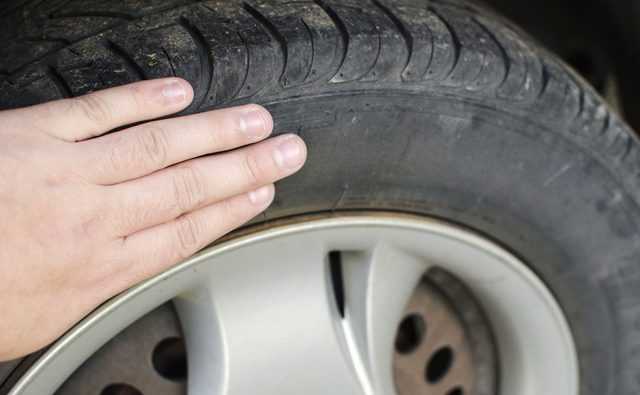
Purchasing new tires can be a pretty involved process. There's a lot to consider when making such an important purchase, especially if you're not a car enthusiast or expert.
Many late-model cars are equipped with a tire pressure monitoring system (TPMS), which is an internal car system that alerts you when one or more tires are significantly underinflated by displaying the yellow low-tire indicator on your dashboard. Resetting your car's TPMS after the tire(s) are inflated depends on the car model, as well as whether or not you have a direct or indirect TPMS.
Tip: Tires normally lose a small amount of air pressure every day. Left unchecked, that can add up to a problem.
There are recommended techniques for both reaching and maintaining tire pressure and reducing tire wear. In fact, according to the U.S. Department of Energy, driving on underinflated tires can cause unsafe handling problems, as well as contribute to tire wear and reduced gas mileage.
Tire pressure is measured in pounds per square inch (psi). The recommended tire pressure or psi specified by your vehicle's manufacturer or on the tire itself is there to ensure that you get optimum performance every time you drive. This includes optimum tire wear and comfort.
The recommended tire pressure or psi specified by your vehicle's manufacturer or on the tire itself is there to ensure that you get optimum performance every time you drive. This includes optimum tire wear and comfort.
Granted, underinflating your tires to make them softer can result in a smoother ride and a larger contact patch (area) with the road surface. But not without some tradeoffs.
When an underinflated tire (even by as little as 6 psi) hits a pothole, it increases the possibility of damaging it. With decreased tire pressure, the center of the tire's tread bows in slightly, causing the tire to ride on its outer edges. The result is excessive wear on the tire's inner and outer shoulders. In addition, the softer sidewall of an underinflated tire can exaggerate the sway your vehicle experiences when cornering, and may cause a top-heavy vehicle to roll over.
Tip: Make it a habit to check your tire pressure once a month.
Ultimately, low tire pressure can shorten the lifespan of your tires. Having the correct pressure in car tires also helps you get good gas mileage. To understand the recommended tire pressure for your vehicle, review the tag on the inside of the door.
Having the correct pressure in car tires also helps you get good gas mileage. To understand the recommended tire pressure for your vehicle, review the tag on the inside of the door.
Here are 6 steps to follow when checking the tire pressure:


Having trouble getting air in your tires or not sure if you've got the right pressure? Just keep checking periodically until you get it right.
Tip: Driving heats up your tires, which increases the psi. It's best to check them in the morning while they are still relatively cold. You can also check them after your car has been sitting for a few hours or driven for just a few miles.
Learn more about the benefits of Synchrony Car Care today. With the right partner, you'll be prepared for all your car maintenance needs.
 edmunds.com/how-to/how-to-check-tire-pressure-and-inflate-tires.html
edmunds.com/how-to/how-to-check-tire-pressure-and-inflate-tires.htmlDisclaimer: We include links to other websites in this article for our convenience. We do not endorse any content on these sites. All product names, logos, and brands are property of their respective owners. All company, product and service names used in this website are for identification purposes only. Use of these names, logos, and brands does not imply endorsement. This content is subject to change without notice and offered for informational use only. You are urged to consult with your individual advisors with respect to any information presented. Synchrony and any of its affiliates (collectively, “Synchrony”) make no representations or warranties regarding this content and accept no liability for any loss or harm arising from the use of the information provided. Your receipt of this material constitutes your acceptance of these terms and conditions.
© 2022 Synchrony Bank.
©2022 SYNCHRONY BANK
Save article:
The article says:
When the tires are optimally inflated, the low tire pressure indicator (TPMS) does not light up on the vehicle's dashboard. However, in some cases, it lights up even if the pressure is normal. This can't help but be annoying, especially when the tires are inflated normally. In our article today, we will figure out how to reset a tire pressure error.
American and European scientists conducted a study, during which it was found that most drivers do not check whether the wheels are properly inflated before getting behind the wheel of a car. Only 40% of car owners perform such a check - and even then only once every 12 months. This is the reason for a large number of accidents.
Only 40% of car owners perform such a check - and even then only once every 12 months. This is the reason for a large number of accidents.
The TPMS (Tyre pressure monitoring system) system is designed to monitor tire pressure, as well as warn of a malfunction. If the tires are under-inflated or over-inflated, an error will be displayed on the remote control or an audible signal will appear.
What is dangerous too high or, conversely, low pressure? The risk of an accident increases, the car begins to consume more fuel, in addition, the rubber wears out faster.
Photo: Shutterstock
The above devices operate on the same principle. Let's figure out how information about what tire pressure gets to the control panel.

Consider how pressure is calculated by measuring instruments. Typically, the sensor performs a comparison of the angular rotation of the wheel. Knowing the value of this parameter, you can calculate the distance that the wheel will travel in one rotation.
Obviously, if the tires are under-inflated or over-inflated, then the outer diameter of the wheel will be different. Visually, a person cannot determine this change. But the sensor notices even such changes. The system fixes non-compliance with the required parameters.
Visually, a person cannot determine this change. But the sensor notices even such changes. The system fixes non-compliance with the required parameters.
The sensor will still respond, despite the fact that the wheel circumference has changed quite a bit. In this situation, it is necessary to find out what mechanical reason led to this. Only in this way can you eliminate the misinterpretation of the signals transmitted by the system. This can happen because:
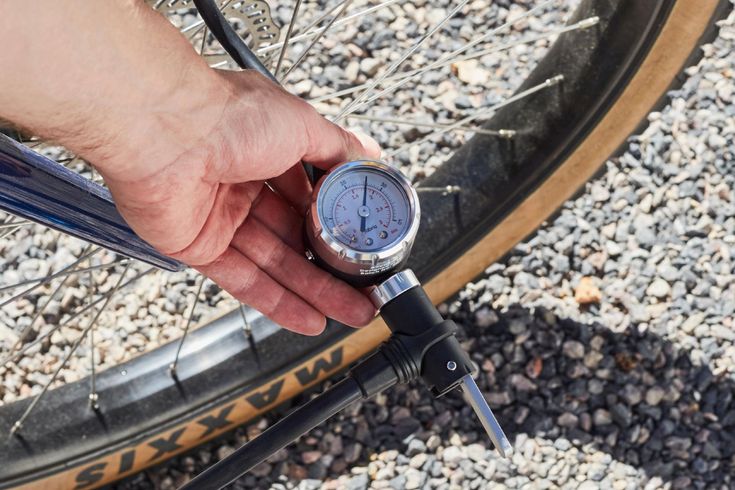
Also, the TPMS system gives an error when you install new wheels or rearrange them.
When, after these steps, a tire pressure error appeared, indicating unbalance, you should reset the settings, and then set the basic parameters. In this case, the control signal may remain even if the basic settings have been selected.
Why such problems may occur:
See also
Velcro or spikes: which rubber is better for the Russian winter?
Read more
How to reset tire pressure error? To begin with, imagine that the TPMS system is working properly and the blinking light indicates a problem with the undercarriage of the machine. The first thing you should do is slowly release the gas. You can not brake sharply, turn the steering wheel. After the car has stopped, inspect the tires to make sure the rubber is not punctured or broken. Then you can check if the tire pressure is normal.
The first thing you should do is slowly release the gas. You can not brake sharply, turn the steering wheel. After the car has stopped, inspect the tires to make sure the rubber is not punctured or broken. Then you can check if the tire pressure is normal.
Pay attention! The TPMS will not always show a tire pressure error. For example, if the tires are slowly deflating, the system will not inform you about the problem. In the same way, she will not notice the error if the tire pressure starts to drop rapidly. This usually happens when a tire ruptures. This feature of the TPMS system is explained by the specifics of identifying and counting nonconformities.
However, in some cases, it happens that the TPMS system indicator is on, but the tires are in perfect condition. How to reset tire pressure error? We understand.
The complex TPMS system in some cases starts to work incorrectly. Usually, car owners observe the following picture: a tire pressure error is displayed on the display (the tire is underinflated), but in reality everything is fine with the wheel. You have to reset the tire pressure error. Otherwise, the TPMS system starts to work incorrectly.
Usually, car owners observe the following picture: a tire pressure error is displayed on the display (the tire is underinflated), but in reality everything is fine with the wheel. You have to reset the tire pressure error. Otherwise, the TPMS system starts to work incorrectly.
Photo: Shutterstock
You also have to reset the tire pressure error when there is radio interference from high voltage power lines. Or when sources of radio signals are located in the immediate vicinity. But as soon as you move away from them, the pressure error disappears and the system begins to function properly.
The reason for the malfunction may lie in the sensor, which is "failed". This damage cannot be easily repaired. How to reset a tire pressure error if the sensor flashes, while you hear a beep, lose your vigilance and find it difficult to drive a car? There are 4 ways to fix this problem.
To reset the error, pick up a speed of 80 km / h and continue driving for another 15 kilometers.
This method is the easiest to implement. If your car has this feature, then turn on the cruise control so that the speed does not change. Depending on the model of your car, you will be able to reset the tire pressure error at a speed that exceeds the specified one. After you cover a distance of 15-20 kilometers, maintaining the same speed of 80 km / h, make a stop. Turn off the motor. When you start it again, the tire pressure error will disappear.
Popular articles
Without damage: how to reduce the fuel consumption of your car
11/29/2022
18
How much do they pay for advertising on a car
11/25/2022
112
Best car tool kit
11/18/2022
145
What is in my name to you, or How to decipher the marking of engine oil
11/17/2022
119
How to clean car seats
11/15/2022
94
Press the tire pressure monitoring system (TPMS) reset button on your car and you will be able to reset the error.
It does not matter what type of low pressure warning system is used. In any case, there will be a sensor on each wheel of your car. Sometimes it may be necessary to reboot the touch system of the car. Read the owner's manual for the vehicle. It contains information on how to reset a tire pressure error. Most often, the instructions indicate which button to press to reset.
The ignition key must be in the lock. No need to start the car, just turn it to the “on” (“ON”) position. Then press and hold the reset button, which may be under the steering wheel. We are waiting for the low pressure indicator to blink 3 times. After that, you can release the button. We start the car, it should work for 20 minutes. After this time, the computer will calibrate the sensors on the wheels. Now you can turn off the car.
Read also
""
Read more
Lower and then re-inflate the wheels.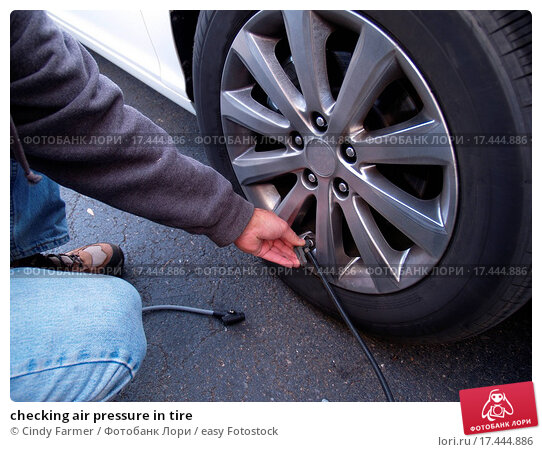
Failed to reset tire pressure error using the previous method? Then we inflate all tires to 0.2 bar, this is the pressure that should be according to the recommendations of car manufacturers. Did the error go away? Then we lower the pressure in the tires completely.
Now we pump up the wheels again. The pressure in them should be the same as indicated on the driver's door pillar or in the car's operating instructions. When there are sensors on the wheels, you need to remember about the spare tire. Now you need to drive about 3-5 kilometers, adhering to a speed of 25 km per hour. So you can reset the tire pressure error.
Remove the battery terminals and then connect it to reset the error.
Each car has a computer that receives data from all kinds of vehicle sensors, including TPMS system sensors. However, any electronics can fail. To reset the error, you will have to reboot the system, for which you need to turn off the power.
Photo: Shutterstock
To do this, open the hood. The battery is located under the hood. Disconnect the negative terminal from it. To perform this operation, use a wrench. Then sit in the driver's seat, turn the key to the "ON" position, but do not start the car. Now you need to press the signal for 3 seconds. This will use up the energy that remains in the electrical system of the machine. Then reconnect the battery. This way you can reset the error.
Sensors keep track of tire pressure. However, you need to be sure that they function properly. Of course, you do not need to constantly walk around with a special measuring device and find out the status of the sensors. It just needs to be calibrated from time to time.
It is performed quite simply. The most important thing to remember is that, depending on the make and model of your car, for each wheel there are pressure parameters strictly defined by the manufacturer for winter and summer. These values should be given to the sensors. How the installation and configuration will be performed depends on the controller used.
These values should be given to the sensors. How the installation and configuration will be performed depends on the controller used.
 Experts do not recommend using the internal controller yourself. However, additional settings are not required if the data is read using the screen that is directly on the control system.
Experts do not recommend using the internal controller yourself. However, additional settings are not required if the data is read using the screen that is directly on the control system. For current promotions on the Halva card, which will help you profitably purchase household appliances, you can follow here.
To prevent a tire pressure error from appearing, it is important to calibrate (adjust the TPMS system) every time a change is made. For example, when you installed a new set of wheels, repaired tires, did balancing, and the like. Using TPMS controllers is quite simple. The main thing is to read the instructions for use of the device. And make sure that the tire pressure is the one recommended by the car manufacturer.
See also
"What tires can be put on rims 14, 15 and 16: professional advice"
Read more
Every car owner gets annoyed if the tire pressure error icon lights up on the dashboard. This indicator informs you that something is wrong with the wheels. However, even if the tire pressure is optimal, the tire pressure error must be reset.
This indicator informs you that something is wrong with the wheels. However, even if the tire pressure is optimal, the tire pressure error must be reset.
The fact is that if the TPMS system icon constantly signals insufficient pressure, the driver will not be able to know when the rubber will actually begin to deflate. Driving becomes dangerous for both you and other road users. It is necessary to find out the cause of the malfunction as soon as possible and reset the tire pressure error. This is the only way to operate the vehicle safely.
Tire pressure has a significant effect on driving parameters: comfort, car handling, economy and safety. It is important to maintain the pressure recommended by the manufacturer and check it regularly. Let's figure out how to do it right.
When driving on asphalt, incorrect tire pressure (both high and low) leads to a decrease in the contact patch with the road.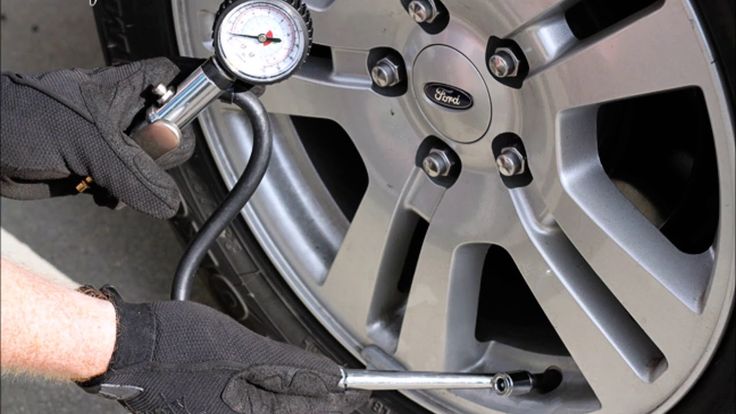 An overinflated wheel clings to the surface only in the central part, which leads to its rapid wear. A poorly inflated tire, on the contrary, "sits" on the sidewalls, leaning on the shoulder areas of the tread and pushing the central part inward. Here's what it looks like:
An overinflated wheel clings to the surface only in the central part, which leads to its rapid wear. A poorly inflated tire, on the contrary, "sits" on the sidewalls, leaning on the shoulder areas of the tread and pushing the central part inward. Here's what it looks like:
Both insufficient and excessive air pressure in tires create many problems for the driver.
1. Increased wear of the central part of the tire tread.
2. Reduced ride comfort, hardness of potholes and road bumps.
3. Increased load on the car's suspension due to reduced damping effect of the tire.
4. Risk of tire damage and herniation due to shock loading (getting into a pit or pothole).
5. Reduced control stability due to reduced contact patch.
1. Increased wear of the tread sidewalls (shoulder areas).
2. Severe deformation of the rubber when driving over bumps, which increases the risk of tire damage.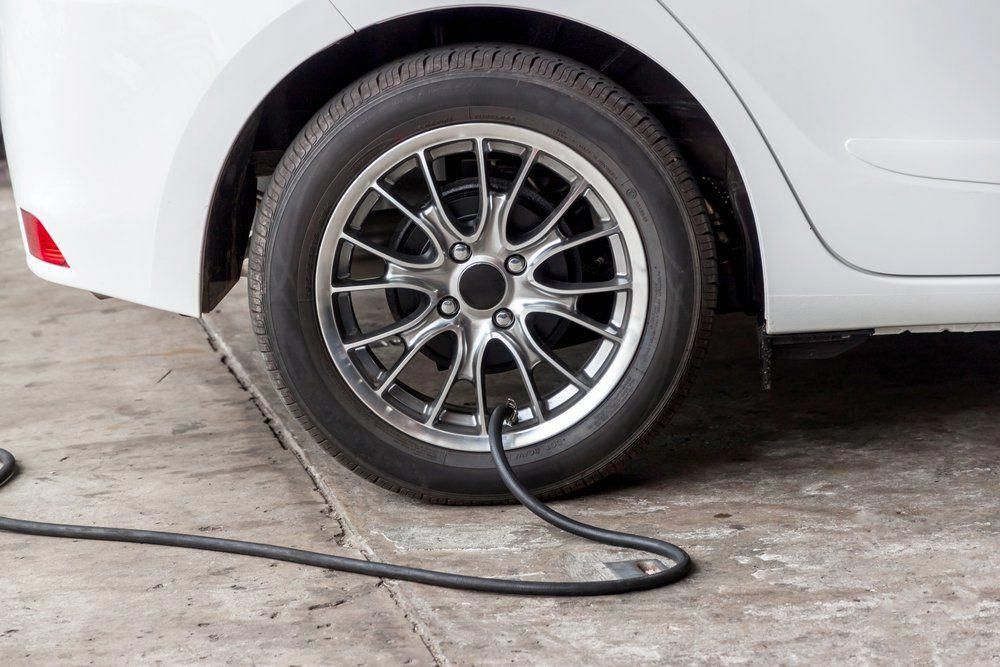
3. An increase in tire temperature, which threatens to delamination of the carcass and can lead to tire explosion at high speed.
4. Increased risk of hydroplaning on wet roads.
5. Risk of tire breaking.
6. Increased fuel consumption.
Reduced pressure hits the driver's pocket hard: a pressure drop of 20% (which is not uncommon: it is enough, for example, to deflate the wheels to 1.8 atmospheres instead of the 2.2 prescribed by the manufacturer) reduces tire life by 25–30% and increases fuel consumption fuel by 3%.
There is no universal tire pressure: it depends on the size of the tires, the characteristics of the machine (primarily weight) and road conditions. Therefore, it is important to follow the factory recommendations, maintaining exactly the tire pressure that the engineers expected when designing the car.
The recommended pressure for your machine can be found in the operating instructions and on the sticker in the door frame. If, depending on the configuration, tires of several dimensions were installed on the car, then the pressure recommended for them may differ - look in the table for your exact wheel size. The manufacturer may prescribe an increase in tire pressure at the maximum load of the machine. For the spare tire (Spare tire), the required pressure is also indicated on a separate line - note that it is much higher than the standard one.
If, depending on the configuration, tires of several dimensions were installed on the car, then the pressure recommended for them may differ - look in the table for your exact wheel size. The manufacturer may prescribe an increase in tire pressure at the maximum load of the machine. For the spare tire (Spare tire), the required pressure is also indicated on a separate line - note that it is much higher than the standard one.
So, you have found the necessary pressure parameters, it remains to decipher them. In physics, pressure is measured in pascals, in real life - in anything: in bars, atmospheres, pounds-force, kilogram-force ... Drivers and tire workers usually use the term atmosphere, but such a unit is often absent on pressure gauges (pressure measuring devices) . Let's clear up this confusion.
Atmosphere is a non-systemic unit of measurement, approximately equal to atmospheric pressure on the surface of the Earth. Since it has become widely used, it was necessary to somehow equate it with correct physical units. For simplicity, one atmosphere is considered equal to one bar, one kilogram-force and one hundred kilopascals.
For simplicity, one atmosphere is considered equal to one bar, one kilogram-force and one hundred kilopascals.
In addition to the technical atmosphere (at), there is also the physical atmosphere (atm), which is slightly larger. Again, for convenience, they are considered equal. But all these assumptions introduce an error, so if you need accurate tire pressure, measure it correctly - in pascals or bars. Moreover, manufacturers usually indicate the pressure in these quantities.
Imperial pounds-force (aka PSI, “psi”), popular in the USA, is more difficult to translate, here you can’t do without a calculator. In the table, we have collected together all pressure units with exact values, and also approximately brought them to each other to simplify calculations:
| Pressure units | |||||
| Pascal | Bar | Technical atmosphere | Physical atmosphere | PSI | |
| 1 Pa | 1 N/m² | 10-5 | 10. | 9.8692•10-6 | 145.04•10-6 |
| 1 bar | 105 | 1x106 dyne/cm² | 1.0197 | 0.98692 | 14.504 |
| 1 at | 98066.5 | 0.980665 | 1 kgf/cm² | 0.96784 | 14.223 |
| 1 bar | 101325 | 1.01325 | 1.033 | 1 bar | 14. |
| 1psi | 6894.76 | 68.948•10-3 | 70.307•10-3 | 68.046•10-3 | 1lbf/in² |
It is advisable to check tire pressure daily, before driving. But this is only possible with a very measured rhythm of life. In reality, checking at least once a month is already an excellent indicator for the average driver. But before traveling a long distance, checking the pressure and visual inspection of tires and rims should be done in any case.
It is necessary to measure the pressure in cold tires, that is, before driving. During driving, the tires heat up, which increases the pressure by about 10%. Therefore, never release supposedly excess air from hot tires: after cooling, the pressure will be below normal.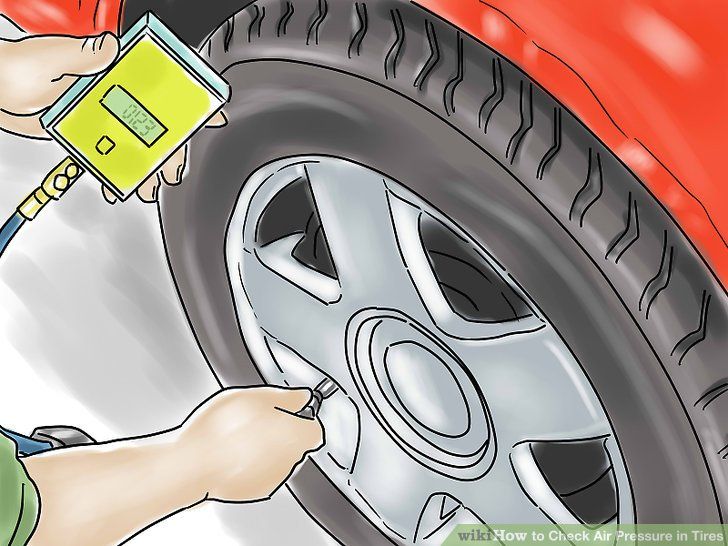 If you had to inflate a hot tire during a trip, inflate it 10% more than the nominal value, and check the pressure again when the wheels have cooled down - no earlier than 3 hours after stopping.
If you had to inflate a hot tire during a trip, inflate it 10% more than the nominal value, and check the pressure again when the wheels have cooled down - no earlier than 3 hours after stopping.
Always check the pressure in all tires. Different tire pressures seriously affect handling and can cause the car to pull to the side. Do not forget about the "spare tire": it should always be inflated in case of an unexpected wheel change on the road.
For long-term driving at high speeds (more than 160 km/h), car manufacturers advise increasing tire pressure by 0.2-0.4 bar from the recommended value. This will slightly improve the handling of the car, although it will negatively affect comfort. But such advice is relevant for driving on high-speed autobahns, and not for everyday urban use, especially in Russia.
Before a long trip on a dirt road or a road with a muddy surface (mud, snow), it is wise, on the contrary, to reduce the pressure in the tires - this will improve the grip. In summer, it is worth limiting yourself to reducing pressure by 5-10% of the nominal value, and in winter - by 10-15%.
In summer, it is worth limiting yourself to reducing pressure by 5-10% of the nominal value, and in winter - by 10-15%.
The pressure in low-profile tires (especially non-standard sizes) must be monitored especially carefully. Low profile tires have two features: a low sidewall (profile) height and a large rim diameter. If the tire has the correct air pressure, only the tread is in contact with the road. Low pressure causes the sidewall of the tire to bend, causing it to touch the roadway and wear out quickly, up to complete abrasion. And punching a low-profile tire in a pit at low pressure is much easier.
When inflating low profile tires, you need to focus on the pressure indicated for a full load of the machine and the maximum allowable pressure for a particular tire. It is indicated on the sidewall, next to the inscription max pressure, in one of the accepted units of measurement: kilopascals (KPA), bars (BAR) or pounds-force (PSI).